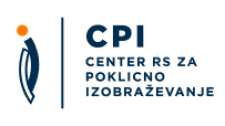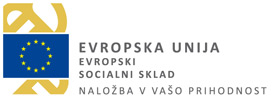Primary tabs
Diplomirani inženir računalništva in informatike (un)/diplomirana inženirka računalništva in informatike (un)
Selected qualifications
| Name of qualification | Name of qualification: Diplomirani inženir računalništva in informatike (un)/diplomirana inženirka računalništva in informatike (un)Add to comparison |
|---|---|
| Translated title (no legal status) | Translated title: Bachelor of Science of computer and information science engineer |
| Type of qualification | Type of qualification: Academic bachelor's degree |
| Category of qualification | Category of qualification: Educational Qualification |
| Type of education | Type of education: Academic bachelor's education |
| Duration |
Duration of education:
3 years
|
| Credits | Credits: 180 credits |
| Admission requirements |
Entry conditions:
|
| ISCED field |
Field:
Information and Communication Technologies (ICTs)
|
| ISCED subfield | subfield: information and communication technologies (icts) not further defined |
| Qualification level |
SQF Level:
SQF 7 |
The qualification holder is qualified to:
(general competences)
- analyse, synthesise and anticipate solutions and the consequences of factors in the computer profession,
- critically assess developments relating to computer and information sciences,
- develop communication skills,
- cooperate, and work in a group and in projects,
- autonomously search for and obtain professional knowledge and integrate it with existing knowledge,
- search for and interpret fresh information, and apply it in the context of the computer profession,
- autonomously work in a professional manner.
- describe a given situation by properly using mathematical and computer symbols and notations,
- explain own understanding of computer concepts and principles,
- resolve problems through the application of modern technologies,
- systematically analyse a given problem,
- apply an algorithmic approach to resolve a given problem to develop an algorithm,
- draw new logical conclusions,
- confidently face a given computer problem and search for solutions, and
- extrapolate a problem into larger problems and apply an engineering-based approach to combine partial solutions.
(subject-specific competences)
- describe a given situation by properly using mathematical and computer symbols and notations,
- explain own understanding of computer concepts and principles,
- resolve problems through the application of modern technologies,
- systematically analyse a given problem,
- apply an algorithmic approach to resolve a given problem to develop an algorithm,
- conclude new logical conclusions from given data,
- face a given computer problem and search for solutions, and
- extrapolate a problem into supra problems and apply an engineering-based approach to combine partial solutions.
Students may progress to a higher year if they accumulate 42 credits for the current year and meet all requirements for the previous year.
Diplomirani inženir računalništva in informatike (un)/diplomirana inženirka računalništva in informatike (un)
SQF 7
EQF 6
The Career path tab shows the possible career path within the selected qualification area, which is not the only one and is not mandatory. The actual transition between qualifications, which is determined by law, is defined in the Transition tab.
SQF 8 / EQF 7
Doktor znanosti/doktorica znanosti s področja informacijske in komunikacijske tehnologije
Doktor znanosti/doktorica znanosti s področja računalništva in informatike
Doktor znanosti/doktorica znanosti s področja računalništva in informatike
Doktor znanosti/doktorica znanosti s področja računalništva in informatike
SQF 10 / EQF 8
Second-cycle master's study programmes (SQF level 8)
To complete their studies, students must meet all requirements for all subjects in which they have enrolled, and prepare a presentation of a final project task, to be presented in the scope of a seminar.
University of Primorska, Faculty of Mathematics, Natural Sciences and Information Technologies
URL
Awarding body URL:Upcoming event
International Conference: 10 years of Slovenian Qualifications Framework
International Conference: 10 years of Slovenian Qualifications Framework Brdo Congress Centre, Predoslje 39, 4000...
© Center RS za poklicno izobraževanje, 2018. All rights reserved
Sitemap General legal notice Cookie Policy Production: ENKI






